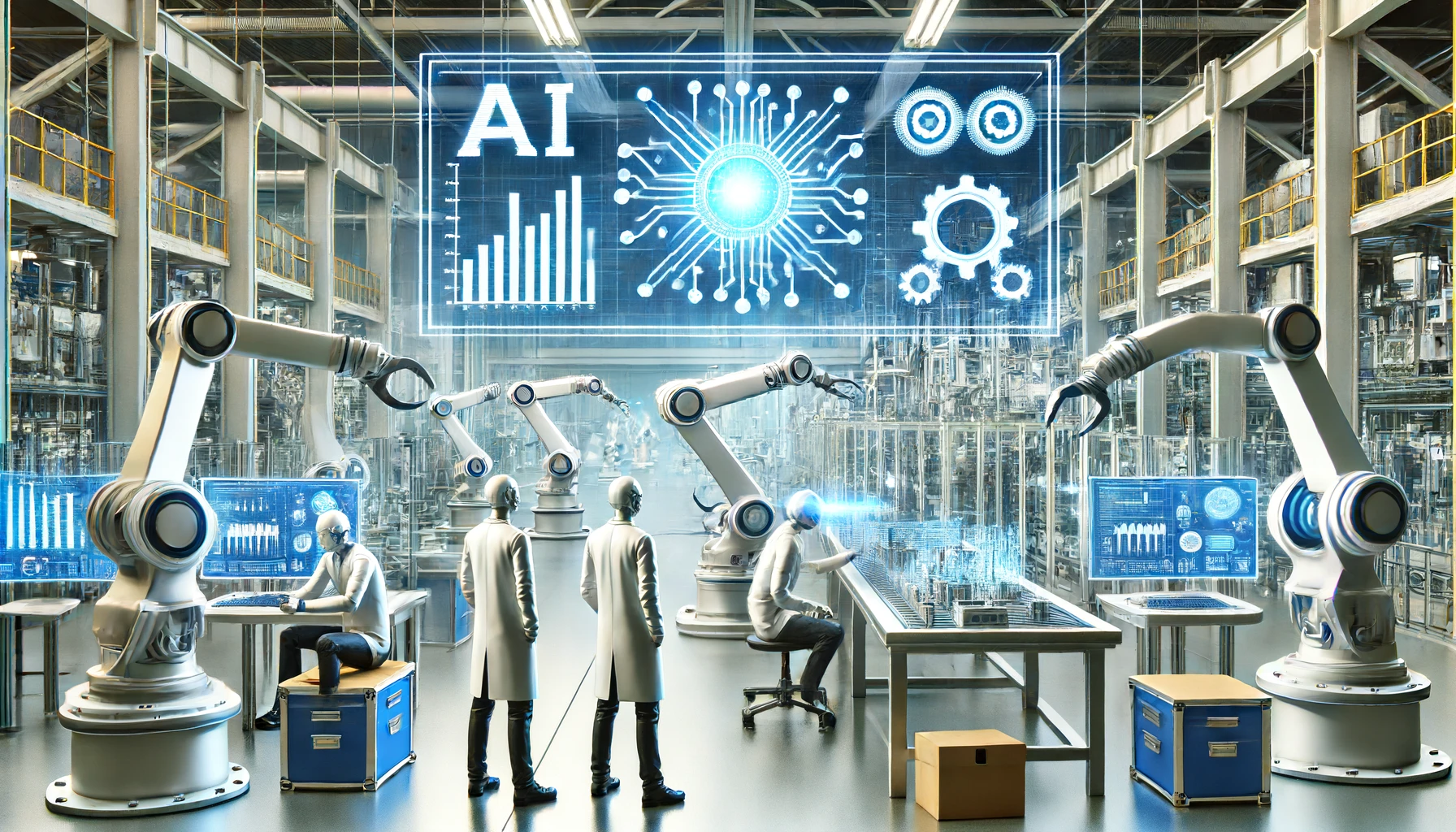The Impact of AI on Traditional Casting Industry and its Transformation
2025-02-13 10:10:59 hits:0
Characteristics of the Traditional Casting Industry
The traditional casting industry has several key characteristics:
- Labor-intensive: The casting process relies heavily on manual labor, especially in mold making, casting finishing, inspection, and maintenance.
- Complex and Stable Processes: Traditional casting methods are typically based on long-accumulated experience, but many steps still rely on manual monitoring and adjustment.
- High Energy Consumption and Environmental Pressure: While the casting industry uses energy efficiently, the consumption is still significant, and the process generates waste gases, waste materials, and noise, creating environmental challenges.
- Quality Variability: Due to human involvement and process control complexities, the quality of castings can sometimes fluctuate, leading to rework and scrap rates.
Improvements in the Traditional Casting Industry in the AI Era
1. Intelligent Production Scheduling and Process Optimization
In traditional casting, production scheduling is often based on human experience, and process parameters are adjusted manually, which can lead to waste. AI brings intelligence and data-driven approaches to production scheduling and process optimization:
- Smart Scheduling Systems: AI’s data analysis and forecasting capabilities allow for real-time scheduling of production lines, optimizing resource allocation and preventing overproduction or idle resources.
- Automated Process Optimization: AI can analyze the impact of different process parameters (e.g., pouring temperature, cooling speed, mold pressure) on casting quality and automatically adjust these parameters to improve efficiency and consistency.
2. Quality Control and Defect Detection
Traditional quality control often relies on manual inspection, which is prone to human error and can lead to quality fluctuations. AI improves quality control:
- Computer Vision and Machine Learning: AI systems, using high-definition cameras and sensors, can detect casting surface defects such as cracks, pores, and sand holes in real time. Machine learning algorithms enable the system to improve defect detection over time.
- Defect Prediction and Prevention: By analyzing big data, AI can predict potential defects, simulate different production conditions, and avoid quality issues during the manufacturing process.
3. Automation and Robotics
Many steps in traditional casting, such as sandblasting, grinding, assembly, and finishing, require extensive manual labor. AI-powered automation and robotics are transforming these operations:
- Robots Replacing Manual Labor: AI-driven robots can perform high-precision, high-intensity tasks, reducing safety hazards and improving production efficiency. Robots can automatically assemble molds, pour metal, and perform finishing operations.
- Precise Assembly and Processing: AI-enabled automation, combining visual recognition, force feedback, and real-time adjustments, ensures the precise control of assembly and machining processes, improving both accuracy and reliability.
4. Predictive Maintenance and Equipment Management
In traditional casting, equipment breakdowns can cause significant production interruptions. AI helps reduce downtime and maintenance costs through predictive maintenance:
- Sensors and IoT Technology: AI, combined with IoT devices, can continuously monitor equipment, analyze data such as vibration, temperature, and pressure, and predict when failures might occur, allowing for proactive maintenance.
- Smart Maintenance Decisions: AI can provide optimal maintenance plans and schedules based on equipment performance data and past maintenance records, helping to extend the life of machines.
5. Energy Efficiency and Green Manufacturing
The casting industry faces challenges related to energy consumption and environmental pollution. AI contributes to energy-saving and green manufacturing:
- Energy Optimization: AI can optimize energy use based on production demands, reducing unnecessary energy consumption. For example, adjusting furnace temperature control and energy distribution during pouring can lower energy waste.
- Waste Management and Recycling: AI systems monitor the waste generation process in casting, analyze data in real time to identify sources of waste, and optimize production processes to minimize waste generation.
Industry Transformation in the AI Era
1. Shift from Manual to Intelligent Manufacturing
With AI, the casting industry is transitioning from manual labor to intelligent production. Automated robots, AI-driven production lines, and smart systems are gradually replacing traditional manual operations. This transition increases productivity, reduces human error, and ensures consistent product quality.
2. Emergence of Customized and Small-Batch Production
AI and digital technologies allow the casting industry to be more flexible in responding to market demands, particularly in customized and small-batch production. AI can quickly analyze customer needs, optimize the design and production processes, and enable the manufacture of smaller, more varied production runs.
- Flexible Production Processes: With AI, casting plants can quickly adjust production processes according to demand, shortening production cycles.
- Personalized Customization: AI-assisted design enables manufacturers to produce complex castings tailored to customer requirements, ensuring high precision and quality.
3. Full Lifecycle Management
AI integrates data from design, production, quality control, and maintenance, facilitating full lifecycle management. By analyzing data throughout the entire process, AI helps optimize product design, improve production efficiency, and extend product lifespans.
- Real-Time Data Feedback and Monitoring: AI can track product performance and quality from design to production and after-sales service, enabling manufacturers to respond promptly to market changes.
4. Expansion of New Markets and Business Models
AI not only boosts productivity but also drives the expansion of new markets and business models. AI technologies enable casting companies to enter higher-end markets like aerospace, automotive, and power generation, offering more precise, higher-quality casting products.
- Service-Oriented Transformation: Casting companies can leverage AI to offer additional value-added services such as remote monitoring, predictive maintenance, and technical support, evolving from traditional product manufacturers to comprehensive solution providers.
Conclusion
The introduction of AI represents a fundamental transformation in the traditional casting industry. By enabling smarter production processes, more precise quality control, automation, predictive maintenance, and energy optimization, AI brings unparalleled benefits to the industry. This transformation is not only a technical upgrade but also a shift in operational models, market positioning, and service offerings. While challenges such as technology integration, funding, and talent development remain, the opportunities and potential of AI are clear—ushering in a new era of casting manufacturing that is more efficient, sustainable, and flexible.

 en
en  fra
fra  de
de  ru
ru  gle
gle  th
th  ara
ara  it
it  jp
jp  kor
kor  zh
zh 




